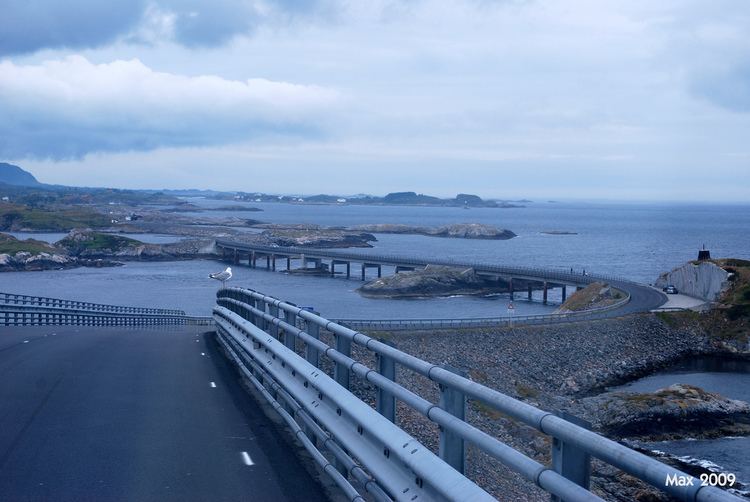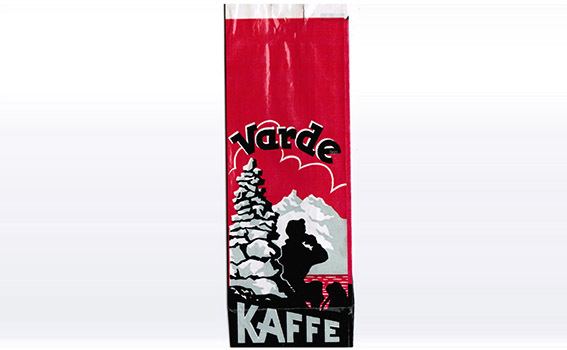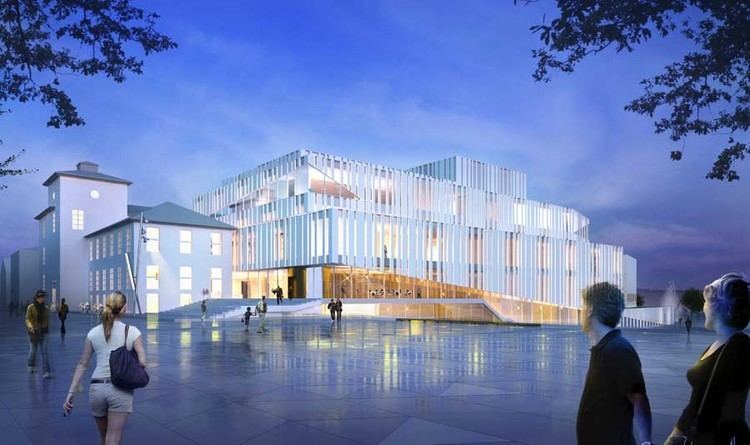Country Area 87.54 km2 Mayor Per Kristian Oyen (Ap) | District Nordmore Population 24,131 | |
 | ||
Language spoken www.kristiansund.kommune.no | ||
Map of Kristiansund
Kristiansund [kristjɑnˈsʉnː] (historically Christianssund and earlier Fosna) is a city and municipality on the western coast of Norway in the Nordmøre district of Møre og Romsdal county. It was officially awarded township status in 1742, and it is still the major town for the region. The administrative center of the municipality is the city of Kristiansund. Other settlements in the municipality include the villages of Kvalvåg, Rensvik, and Nedre Frei.
Contents
- Map of Kristiansund
- Quick tip how to save money on food in norway
- Polo red in cambodia food market
- General information
- Toponymy
- Coat of arms
- Churches
- Geography
- 8000 BC1066
- Middle ages
- 17th to 18th century
- Media
- Climate
- Government
- 2011 election
- Twin towns
- Parks and gardens
- Transport
- Commerce and industry
- Culture and sports
- Tourist attractions
- Notable residents
- References

The city of Kristiansund is the largest settlement in the municipality. The 7.91-square-kilometre (1,950-acre) city has a population (2013) of 18,002 which gives the city a population density of 2,276 inhabitants per square kilometre (5,890/sq mi).

Quick tip how to save money on food in norway
Polo red in cambodia food market
General information

The parish of Christianssund was established as a municipality on 1 January 1838 (see formannskapsdistrikt). On 1 January 1897, the Grip archipelago was separated from Kristiansund Municipality to become a separate municipality. On 1 January 1964, Kristiansund Municipality was merged with the tiny Grip Municipality (population: 104) to the northwest and the Dale area of Bremsnes Municipality on Nordlandet island (population: 963). The neighboring Frei Municipality was merged with Kristiansund on 1 January 2008 creating a much larger Kristiansund Municipality.
Toponymy

The city, formerly named Christianssund, is named after the Danish-Norwegian king Christian VI in 1742. The last element of the name, sund, means "strait". The old name of the town/village (originally the island Kirkelandet) was Fosna or Fosen (Old Norse: fólgsn) which means "hiding place" (here 'hidden port'). It was also often named Lille Fosen ("the small Fosen") to distinguish it from the island Storfosna ("the big Fosen") in Ørland.
Before 1877, the name was written Christianssund, from 1877-1888 it was spelled Kristianssund, and since 1889 it has had its present spelling, Kristiansund.
Before the introduction of postal codes in Norway in 1968, it was easy to confuse the name Kristiansund with Kristiansand in the south. It was therefore obligatory to always add an N (for north) to Kristiansund (Kristiansund N) and an S (for south) to Kristiansand (Kristiansand S). This is pretty much still practiced and also occurs in some other contexts than postal addresses.
Coat-of-arms
The Coat-of-arms is from 1742. It shows a waterfall because the old name of the town (Fosen) was misinterpreted as Fossund (as a compound of foss which means waterfall and sund which means strait). There are, however, no waterfalls in the municipality.
Another myth concerning the coat-of-arms is that there was a mix up, between Kristiansund's and Molde's intended shield. The Dano-Norwegian government officials in charge of the giving of the coats, had a party to remember the momentous occasion and became too drunk and hungover to remember which was which, and so Molde got the coat with a whale (which are scarce in between the Romsdal fjords) and Kristiansund got the waterfall (since Molde is on the mainland and Kristiansund lies in the open sea, it would be more likely that the waterfall was intended for Molde's mountains and the whales for Kristiansund.)
Churches
The Church of Norway has three parishes (sokn) within the municipality of Kristiansund. It is part of the Ytre Nordmøre deanery in the Diocese of Møre.
St. Eystein Catholic Church is the only Catholic church in Kristiansund.
Geography
The municipality borders Smøla Municipality and Aure Municipality to the northeast, Tingvoll Municipality to the east, Gjemnes Municipality to the south, and Averøy Municipality to the southwest. The small Grip archipelago is located in the northwestern part of the municipality. The municipality is surrounded by the Freifjorden and Kvernesfjorden with the open sea to the northwest.
Kristiansund is built on four main islands, with many smaller islands. The island of Nordlandet ("North Land", humorously nicknamed Marokko), is the second largest island and the site of the local airport, Kristiansund Airport, Kvernberget (IATA code: KSU). Kirkelandet, third in size is made up of two areas Kirkelandet and Gomalandet. In the local dialect, Kirkelandet (the "Church Land") is pronounced "Kirklandet", without the middle e. The smallest island is Innlandet ("Innermost Land"; humorously, "Tahiti"). The largest island in the municipality is Frei which was part of the old Frei Municipality which was merged into Kristiansund on 1 January 2008. The highest point of the municipality is located on Frei island, Freikollen at a height of 629 metres (2,064 ft).
The island of Grip, located northwest of Kristiansund is also a part of the municipality. It was Norway's smallest municipality, and also one of the most remote until it merged with Kristiansund in 1964. Today the island of Grip holds status as a deserted fishing village, but in the summer season it is a popular tourist attraction due to the very special location and architecture. Grip Stave Church, the second smallest stave church of Norway (Undredal Stave Church is smaller), is also located at Grip. It is also where Grip Lighthouse is located.
Kristiansund is one of the most densely populated cities of Norway, having what is arguably the country's most urban small city centre, due to the relatively small size of the islands on which it is built and the very constricted central harbour/town area of Kirkelandet.
8000 BC–1066
Many scientists believe that the very first Norwegian lived near the city of Kristiansund. At the end of the last Ice age some areas at the western coast of Norway were ice-free. There was also a lot of food in the sea around Kristiansund at that time, and it is believed that the first settlement arrived in Kristiansund around year 8000 BC.
During the Viking ages there were many important battles around Kristiansund. The most famous one was the Battle of Rastarkalv on the island of Frei, where the Norwegian King Håkon the Good fought against the Eirikssønnene-group. There is now a memorial monument located near Rastakalv (at Nedre Frei, where the battle was fought.
Middle ages
The island of Grip was an important fishing community during the Middle Ages, and was considered to be the most important municipality in the region at the time. The natural harbour in Lille-fosen, close to where Kristiansund is located today was also frequently used for fishing purposes.
17th to 18th century
During the 17th century a small settlement developed around the area we know today as Kristiansund harbour. As more and more settlers arrived, the area became an important trading port for fishing and the lumber transportation along the coast. The Dano-Norwegian government established a customs station here, which was controlled by the main trading port in Trondheim.
Dutch sailors brought the knowledge of clipfish production to Kristiansund at the end of the 17th century, and for a number of years the city was the largest exporter of clipfish in Norway, exporting goods mainly to the Mediterranean countries as Spain and Portugal. The city's clipfish production was also part of the reason why it was awarded town status in 1742.
Media
There are two local TV stations in Kristiansund. The larger one is TVNordvest, (TV North-West) which broadcasts local news from the area around Kristiansund on a daily basis, as well as some other TV shows. The second one is TV Kristiansund, which is more of a culture channel, broadcasting cultural news from Kristiansund, like shows from the city Opera.
The local newspaper of Kristiansund is Tidens Krav, which also functions as a local newspaper for the other municipalities located nearby the city.
Climate
Kristiansund has a maritime, temperate climate with cool-to-warm summers and relatively short and mild winters. The city structure with the unique natural harbour of the city combined with warm wind from the southwest of the Atlantic Ocean and the Gulf Stream gives Kristiansund a much warmer climate than its latitude would indicate.
Government
The city council of Kristiansund has 45 representatives. Per Kristian Øyen from the Labor Party (Arbeiderpartiet) was elected in 2007 as the mayor of Kristiansund, succeeding Dagfinn Ripnes. Øyen was reelected in 2011.
2011 election
After the 2011 election, the following parties have representatives in the municipal council of Kristiansund:
Twin towns
Kirstiansund is twinned with:
Together the three cities hold a tournament called Nordiske Dager ("Nordic Days").
Parks and gardens
Though fairly small in size, the city of Kristiansund contains many green parks and gardens, frequently used by the city's inhabitants. There are two larger parks near the city centre. The first one is located near Langveien, and was constructed in the aftermath of World War II . The second one is located in Vanndamman. This area used to be part of the city water supply, due to the large amount of small lakes in the area. (hence the name "Vanndamman" (The Water ponds)) The two parks are partly linked together, but the Langveien-park serve more as an urban recreation area due to the short walking distance from the city centre, while the Vanndamman-park is more suitable for outings and jogging.
Transport
Started in 1876 and still going strong is the Sundbåt ("Sound Boat"/"Strait Crossing Boat") shuttle service with a capacity of a few tens of passengers, travelling between the islands. The small motor ferry crosses the harbour from Kirkelandet to Innlandet, then goes on to Nordlandet, to Gomalandet, and back to Kirkelandet, repeating the round trip in half-hour intervals morning to evening on weekdays. The Sundbåt bears the distinction of being the world's oldest motorized regular public transport system in continuous service.
The road to Kristiansund from the mainland, Norwegian National Road 70 is connected to European Route E39 by the bridge/tunnel system called Krifast. After passing through the underwater Freifjord Tunnel from the central part of Krifast, National Road 70 crosses Frei, and enters Kristiansund over the Omsund Bridge onto Nordlandet. The Nordsund Bridge brings the Rv 70 to Gomalandet and its terminus in downtown at Kirkelandet. Another high bridge, the Sørsund Bridge, leads from Kirkelandet to Innlandet. E39 leads southwest to the town of Molde and northeast via the European route E6 to Trøndelag and the city of Trondheim.
There used to be a car ferry going from Kirkelandet island to neighboring Averøy Municipality to the west, whose people have been commuting to town for many years for work as well as selling agricultural products. The ferry to Averøy connected Kristiansund to Norwegian National Road 64, which continued along the scenic Atlanterhavsvegen to Molde. The ferry was replaced by the 5.7-kilometre (3.5 mi) long underwater Atlantic Ocean Tunnel in December 2009. Because both tunnels are forbidden for bicyclists, Kristiansund cannot easily be reached by bicycle.
A second car ferry goes from Seivika on Nordlandet to Tustna in the northeast (road: RV 680), with further road and ferry connections to the islands of Smøla and Hitra, and to Aure Municipality on the mainland.
Besides roads and car ferries and Kristiansund Airport, Kvernberget, connections to/from Kristiansund consist of the traditional coastal express Hurtigruten connecting coastal towns from Bergen in the south to Kirkenes in the north, and the high speed catamaran passenger service Kystekspressen to Trondheim. Another option to get to Kristiansund is to fly with Scandinavian Airlines from several other Norwegian cities.
Commerce and industry
Kristiansund is known as the major bacalao city of Norway. Bacalao is made of salted, dried codfish, and has traditionally been exported in large amounts to Spain, Portugal and Latin America as food suitable during Lent. In recent years Kristiansund has become the major oil and gas city at the mid-northwestern coast. Oil companies like Royal Dutch Shell and Statoil have offices in Kristiansund from where they serve their offshore installations at Haltenbanken (one of the northernmost underwater oil fields in the world).
Due to the city's heavy involvement in fish processing and international shipping, there used to be as many as seven consulates in Kristiansund, mainly to Latin countries. Currently, there are only five left: Britain, Finland, Latvia, the Netherlands, and Portugal.
Culture and sports
Kristiansund is an important cultural centre in the region of Nordmøre. The city is probably best known for housing Norway's oldest opera, which was established in 1928 by Edvard Bræin. There is an annual opera festival held every February in Kristiansund named The Opera Weeks (Operafestukene). In addition to this, Kristiansund is also host city of Northern Europes largest photo festival, Nordic Light. Even though this is a rather "young" festival, (Est. 2006) it has grown to become one of the most important of its kind in Europe, attracting famous photographers from all around the world, like Don McCullin, Jock Sturges and William Klein. Other smaller festivals held in Kristiansund include The Tahiti Festival and Kristiansund Church, Art and Culture Festival (shortened to the KKKK-festival in Norwegian).
Kristiansund's main football team, Kristiansund BK, is a result of the 2003 merger between the two largest football teams in the city, KFK and Clausenengen, which together with support from local businesses helped in creating a united elite club commitment. The club started at the 4th level (tredje divisjon) of the Norwegian football league system, and qualifyed for the 2017 season to play at the top level (Eliteserien).
Other popular sports in Kristiansund include Volleyball, Wrestling, Swimming, Ice skating and Handball.
Tourist attractions
Notable residents
The following people are from, or have their roots in, Kristiansund.
